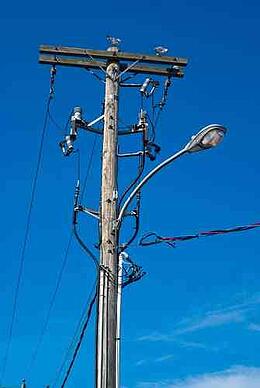7 Things Joint Use Managers May Be Overlooking
 When it comes to joint use management, there is a lot to know. From regulatory differences state to state, to the subtleties of contract management, to simply having a good working knowledge of your attachers and their businesses, the management of utility poles and attachments is quite a bit more complex than just keeping track of what attacher is on what pole. As you well know, that task is difficult enough.
When it comes to joint use management, there is a lot to know. From regulatory differences state to state, to the subtleties of contract management, to simply having a good working knowledge of your attachers and their businesses, the management of utility poles and attachments is quite a bit more complex than just keeping track of what attacher is on what pole. As you well know, that task is difficult enough.
To help, here are seven things managers may be overlooking:
1. Regulation: state or federal?
It is important to know your geography as it pertains to state versus federal regulation of utility poles and attachers. Simply, FCC rules are often divergent from state regulations, though the FCC does broadly set some “rules of general applicability” that even state-regulated entities follow, including a broadly defined set of recognized industry standards, non-discrimination and no preference rules.[1] The bottom line: 18 states plus Washington DC are state- regulated.
2. State Differences. Learn them.
For those 18 states and the District of Columbia mentioned above, regulations may be somewhat different than FCC guidelines, and are often also different from one another, state to state. If the item in question applies to your company, study the differences between the states or you may face the consequences of fines and problems down the line.
3. Electric Cooperatives and municipalities are special.
There are a large number of states where attachments owned by co-ops and municipalities are exempt from federal and state pole attachment regulation. Basically, everywhere except for Kentucky, Vermont and Oregon. This might sound like the wild west, but the language of the law is clear as to what is required of the two entities: “Unless state law requires a different result, the Municipal Exemption gives municipal entities the opportunity to reject any or all federal access, rate and procedural requirements and interpretations—municipal entities need only avoid erecting unreasonable barriers to entry and act in a competitively neutral and non-discriminatory manner.”[2] The key here is to remember that the guidelines you expect may not apply in all situations.
4. Hold your contracts high.
Contract terms are like fingerprints in many cases—no two are exactly alike. For this reason, joint use managers should have the ability to readily access the terms of each contract made with each attacher, whether the number is one contract or thousands. More importantly, the terms of those contracts must be properly enforced. Contract management software or third party contract administration services can help immeasurably when enforcing terms, giving joint use managers the tools needed to ensure all parties comply with the contracts.
5. Communicate. Communicate. Communicate.
It is too easy inside the office to neglect to adequately communicate with those in the field—and vice versa. Open communication between your joint use group, field engineers, utility technicians, attaching companies and 3rd party contractors, is vital to ensuring processes run smoothly, safety standards are met and concerns discovered on both ends of the pipeline are dealt with successfully. We’ve discussed it before: open communication also builds good will—and stronger, healthier working relationships—making everyone feel part of one team working toward a common goal.
6. Be consistent.
Good process development and management is key to a smooth running, successful joint management department. Set smart processes, communicate the process to all parties involved and check up on everyone’s activities, making sure protocol is being followed. This goes for internal and external business partners as well. The upside: intuitive joint use management software can help, making process creation and enforcement daily routine.
7. Know Your Team.
It sounds like common sense, but managers should take care to familiarize themselves with utility pole co-owners and equipment attachers, from what services they provide to their home locations to how big or small they are. It is simple sociology; connecting with those you are working with can go a long way to inspiring cooperation between everyone involved.
[1] http://www.baller.com/pdfs/updated_primer_on_pole_attachments.pdf
[2] AT&T Communications of the Southwest, Inc. v. City of Dallas, TX, 8 F. Supp. 582, 593-94 (N.D. Tex. 1998), citing Barton-Stupak amendment to Section 253(c) and comments of Rep. Stupak, 141 Cong. Rec. H8425-27 (daily ed., Aug. 4, 1995); accord TCG Detroit v. City of Dearborn, MI, 16 F. Supp. 2d 785, 793 (E.D. Mich. 1998).

Comments